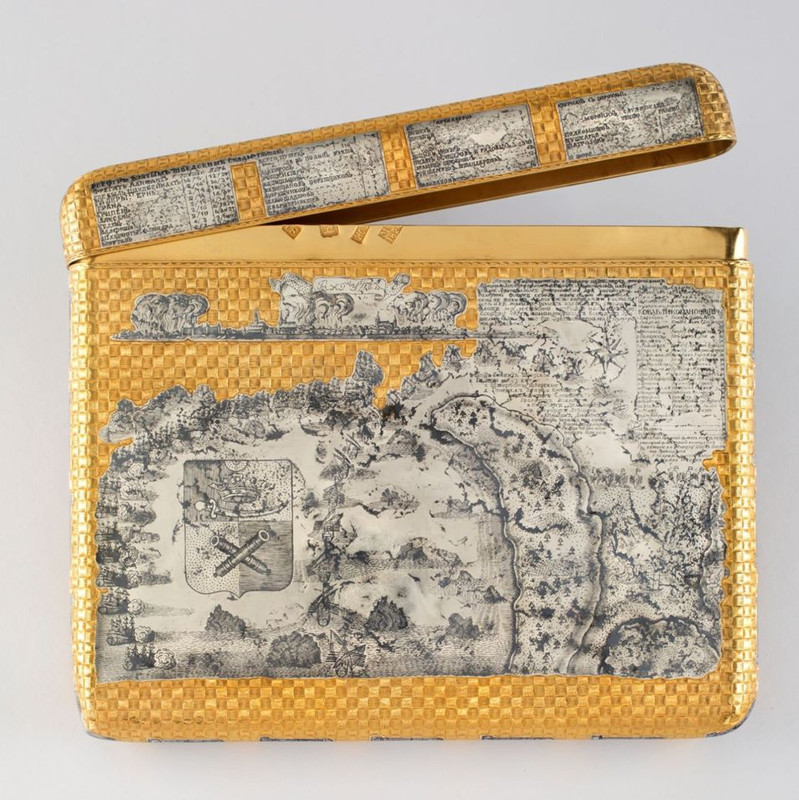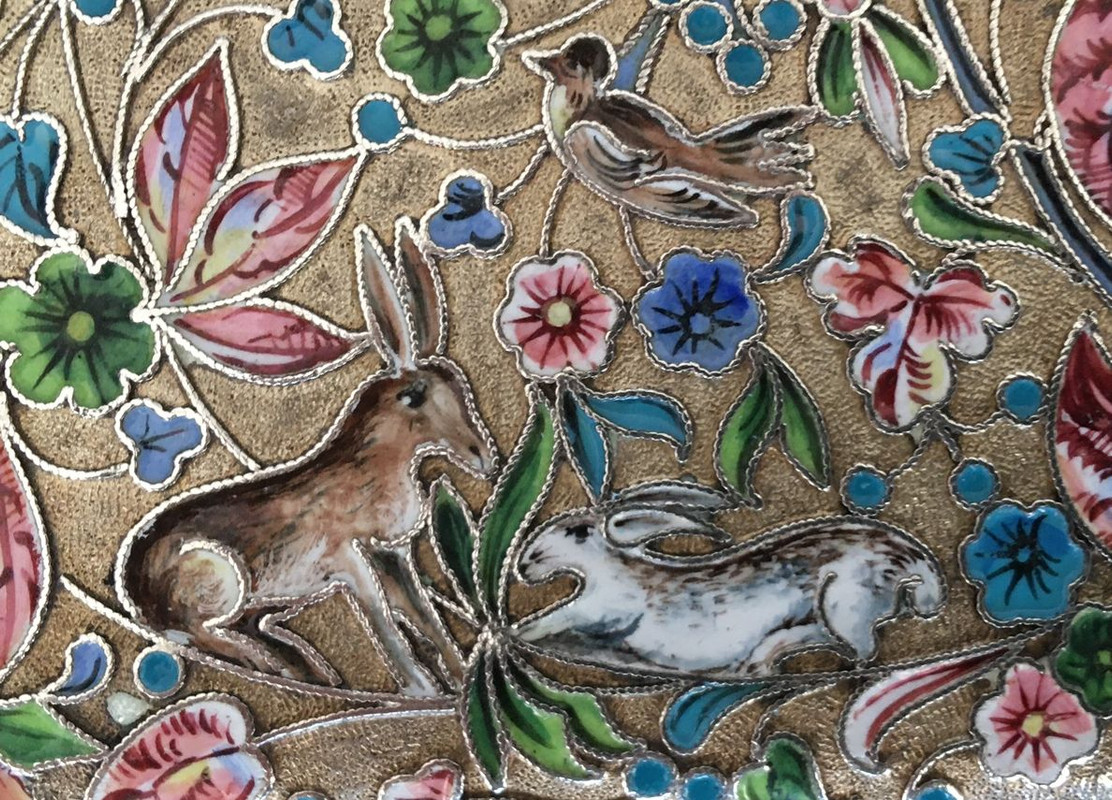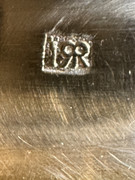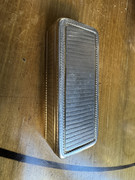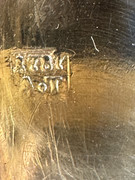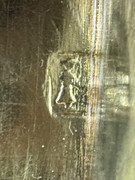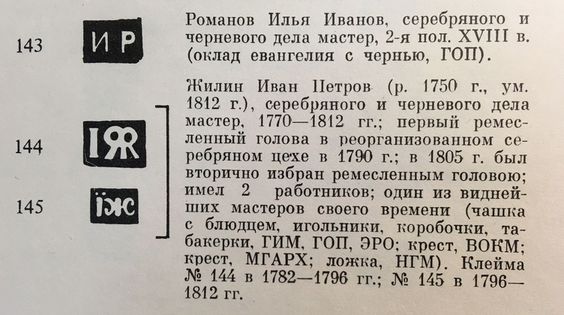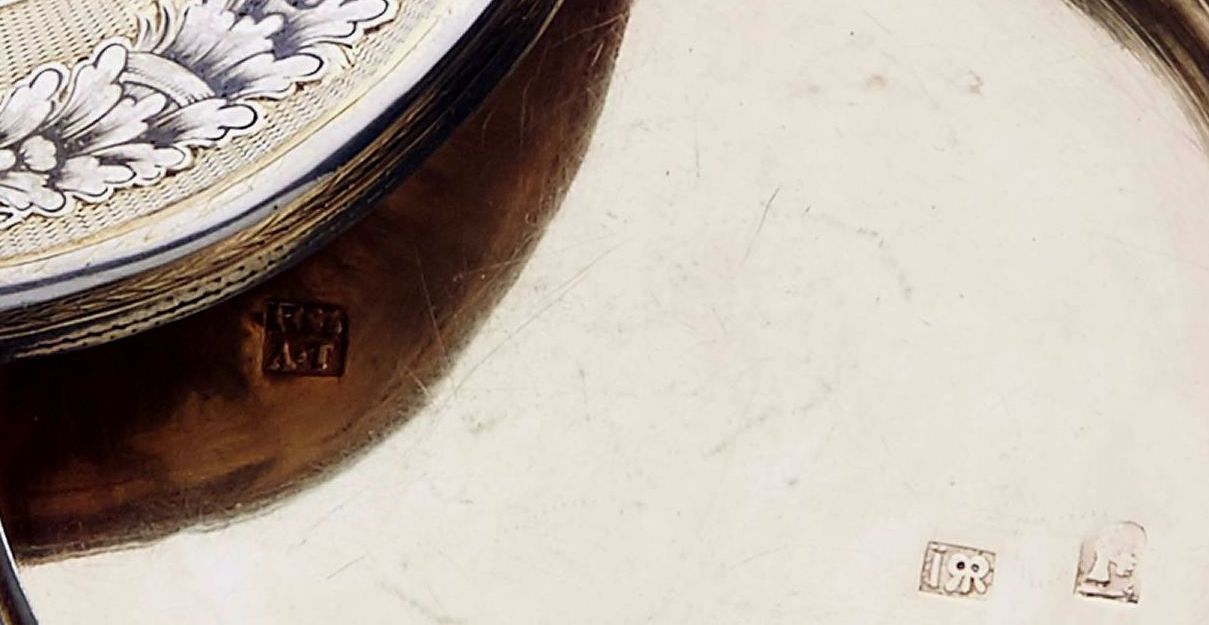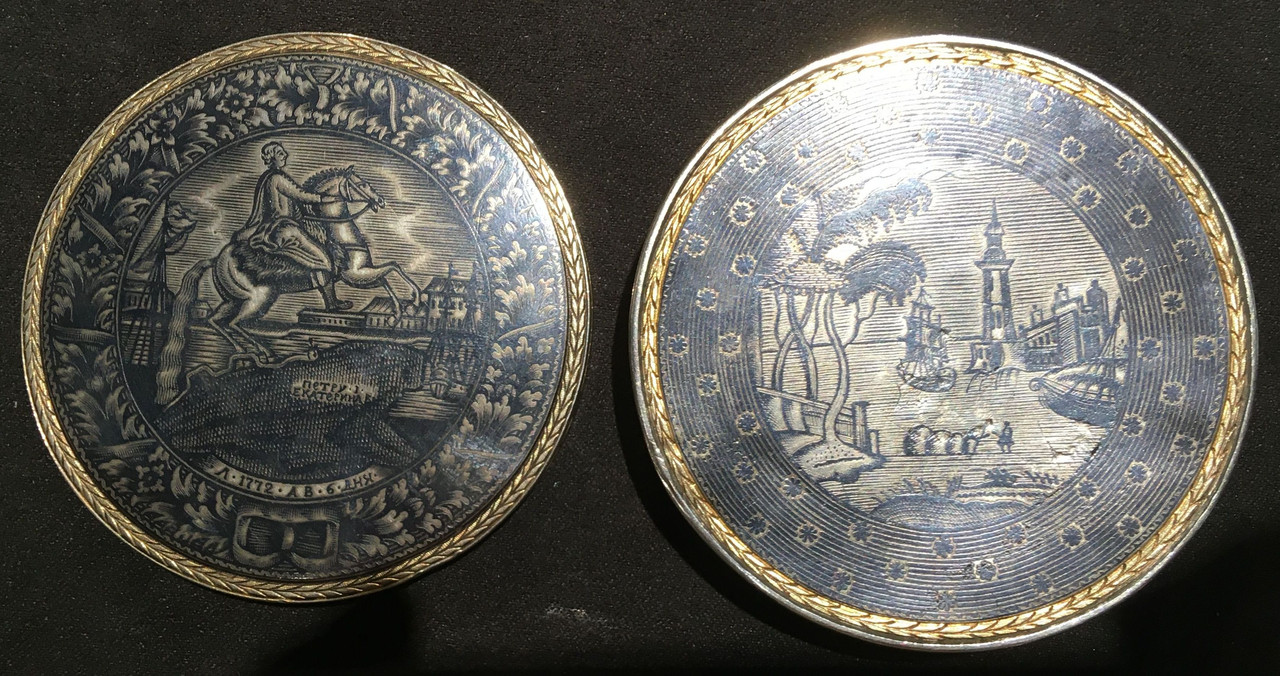Nothern Niello - Veliki Ustiug
Posted: Sun Mar 20, 2022 1:26 pm
Dear members,
the following article "Nothern Niello" is based on a russian webside, I read last week.
I made a summary of a lot of these informations and asked "ya-zemlyak" for posting it in the forum.
Photos: private collection. Please respect the copy rights.
Andreas wrote:15.02.2022
Каждый раздел на этой странице - это часть текста с других сайтов. Наша команда с разных сайтов систематизировала и обработала информацию, и разместила на странице "Северная чернь". В конце каждого раздела есть кнопка "Далее", если её нажать, можно перейти на сайт первоисточник. Мы не возражаем если Вы разместите текст у себя на сайте. Просим только сделать ссылку, что взяли текст с нашего сайта, чтобы люди могли более полно познакомиться с народным промыслом "Северная чернь".
С уважением, Андрей.
Source: Many thanks to Andreas
http://www.ya-zemlyak.ru/nps.asp?id=19
Factory ZAO Severnaya Chern - Velikiy Ustyug
NOTHERN NIELLO
The flowering of niello from Veliki Ustiug falls on the second half of the 18th and early 19th century. Northern niello wins fame as the best in Russia.
In the 18th century, craftsmen from Veliki Ustiug took the lead in the art of silver nielloing, creating an artistic centre.
Silver snuffboxes, trays, cups, all kinds of boxes decorated with nielloed engraving, were in great demand.
THE HISTORY OF NORDIC BLACKS
The first mention of Veliki Ustiug niello dates back to 1683.
The pinnacle of Ustiug silversmithing was the art of applying a niello composition to pieces, allowing the play of light to convey the depth and volume of the image.
The craft's appearance may have been caused by the spiritual authorities' zealous desire to decorate parish and monastery churches in the metropolitan manner.
The silver craftsmanship of Ustiug, rising on the great height as the result of development of its own productive forces and trade-cultural relations, first of all with Moscow, was at the beginning of the XVII century already standing out among other crafts.
In the second quarter of the XVII century, there were more than 20 silversmiths in Ustiug.
The names of some of them are mentioned in the Customs Books, i.e. the production starts to be exported outside the town.
The influence of the Veliki Ustiug niello is evident in all the artistic centres of the North: Vologda, Vyatka, Arkhangelsk, and later in Siberia: Tobolsk, Irkutsk, Tomsk and Yakutsk. Using the same production methods as the masters of Veliky Ustyug, local craftsmen introduced only their own characteristics in the subject of images and details of the drawing.
The niello art reached its peak in Veliky Ustiug in the 18th century.
There are documents in Moscow archives that prove that Mikhail Klimshin, a craftsman from Veliki Ustiug, was called to Moscow in 1744:
"to teach this craftsmanship to the merchants of Moscow".
The silver niello from Veliki Ustiug was very highly valued.
The silver works had a matte tone with a gold or niello pattern.
The prosperity of niello art also promoted opening of a factory of brothers Popov in 1762 which existed for 15 years.
In the second half of the XIX century niello gradually lost a high level of unique art.
Products of local masters were displaced from the central markets by simpler and cheaper niello products of capital firms.
The art of niello slowly turns into a handicraft, and at the beginning of the 20th century northern niello essentially ceased to exist.
The secrets and professional skills of only a few craftsmen in Veliki Ustiug are preserved.
ARTISTS OF NORTHERN NORTHEAST
The subjects of the mid 18th century niello drawings mainly met the requirements and demands of a wealthy client.
Usually pastorals, pleasure walks of nobility on the background of lush nature, garden landscapes with architecture etc. were depicted.
The most celebrated painter of the Northern niello in the 18th century was M. M. Klimshin (1711-1774), who laid the foundations of techniques and artistic solutions that became traditional in art of Veliki Ustiug.
In his works dark figures of people appear in clear silhouettes against a background of landscape or architecture. The images are painted in thick black, typical for Klimshin. The images are painted in thick black, typical for Klimshin.
All the peculiarities of his handwriting are apparent in this wonderful work - refinement of drawing, richness of light and texture elaboration in details, flaring of background, and combination of silver with soft mat gilding.
IVAN ZHILIN (ИВАН ЖИЛИН) - ANCESTOR OF A GENERATION OF SILVERSMITHS
The theme of drawing of niello pieces of this period was typical: pastoral scenes, park landscapes with architecture, etc. In the 70s of the 18th century a new theme appears, glorifying the famous victories of the Russian army and navy. In the 1770s a new theme appeared, glorifying the famous victories of the Russian army and navy, and panoramas of Veliki Ustiug, Arkhangelsk and Vologda.
f.ex. A round snuff-box from the collection of the Russian Museum has a map of the Vologda Viceroyalty framed by a black grid of meridians and latitudes on a gold background.
Rivers are carefully outlined in black and their names are written, and towns are shown with miniature outlines of buildings.
The reverse of the snuff-box contains numerous statistics and geographical information about the area.
In general, a very important role in the history of development of Veliki Ustiug's niello belongs to the Zhilin family.
Peter Zhilin (born 1713) was the founder of a whole generation of silversmiths.
His three sons were involved in silverware craftsmanship.
Known products - Michael (b. 1749 - referred to until 1805).
Ivan (born 1750 - died after 1810) was the head silversmith of Ustiug, and, in turn, became the ancestor of the generation of blacksmiths.
His son Alexander Ivanovich Zhilin (1800 - 1837) is known as the remarkable master of the first half of the XIX century, the grandson and the great grandson also were masters of niello on silver.
Ivan Zhilin has given many years (over forty) to his favourite art. In his early works he was close to the masters of the Popovs' factory, but in time he switched to a new theme, a more graphic manner of execution.
Images of geographical maps appear on I. Zhilin's works.
Among masters of this family Alexander Zhilin is distinguished by his talent.
His works - snuffboxes, decorated with ornaments of grape leaves with bunches of berries, cups and many other products stand out with confident drawing and fineness of execution.
Alexander Zhilin passed on his skills to apprentice Ilya Stepanovich Mineev (born in the early 19th century), who became an excellent workmaster of niello works.
I can only mention a small number of the most outstanding niello masters in Veliki Ustiug. In the 18th - 19th centuries about fifty of them are known.
Zhilin, Alexander

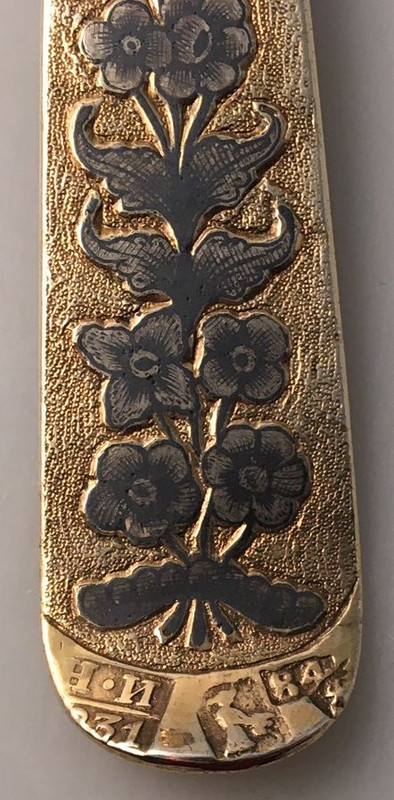
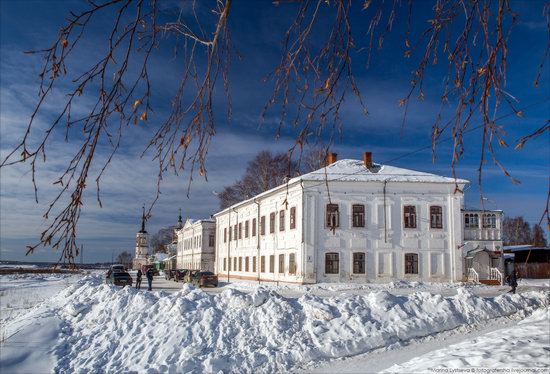
Mineev, Ilya Stepanovich

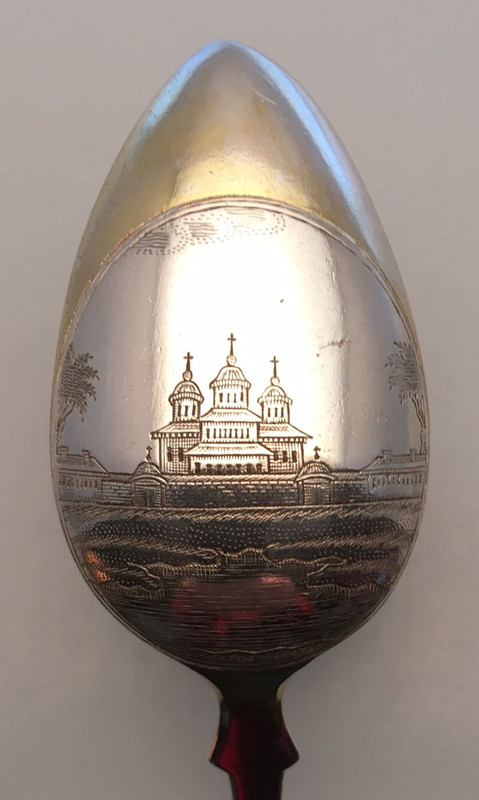
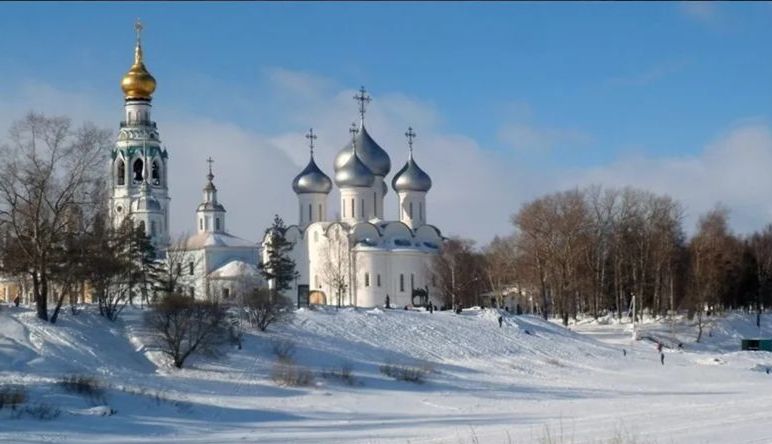
IVAN ZUEV (ИВАН ЗУЕВ ) - MASTER OF ETCHING ON A FINE SILVER BACKGROUND - Volgoda
At the beginning of the 19th century, the Northern niello art was characterized by the dominant Classicist style.
In the works of Veliki Ustiug's niello masters, the typical Baroque gold background disappears and the drawing becomes austere and laconic.
The shapes of the items have also changed and acquired simplicity and a certain universality which was not seen in Baroque works.
The soft tonality of the transitions of the black print is replaced by contrast, graphic elements become characteristic and details are clearly traced.
The spatiality and depth of the drawing completely disappear and are replaced by flatness of images.
Typical are images of garlands, military emblematics, typical of classicism, especially in its final period.
At the same time in drawing and products of northern niello of times of classicism the features inherent in national art, such as ornamentality and richness of pattern, traditional completeness of compositions are evident.
The "Ustyuzhans" expressed their love for their town in numerous panoramas placed on a variety of objects. Mikhail Koshkov, one of the great hereditary craftsmen of the 19th century, decorated a set of teaspoons with views of the town.
In spite of their diminutive size, the finely engraved landscapes faithfully depict the main architectural ensembles of the famous Veliki Ustiug embankment.
Koshkov, Mikhail

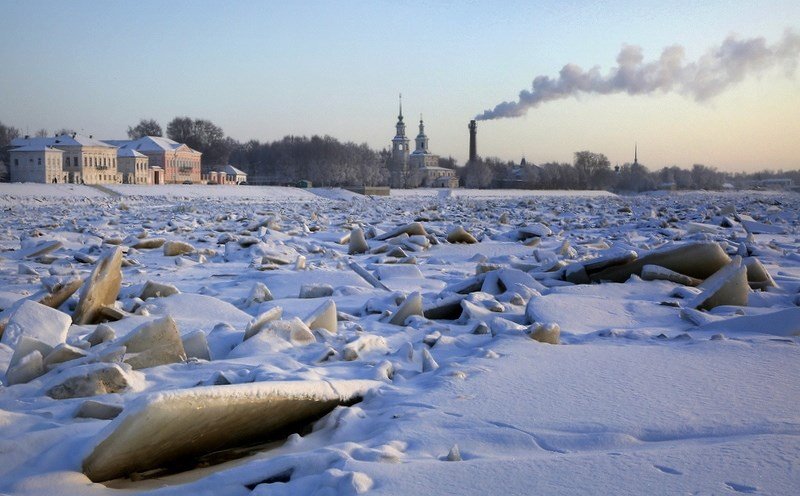
The successes of Ustyig encouraged Vologda masters to make similar attempts.
Such character of ornamental images on niello objects of that time becomes predominant. Instead of entertaining subject images, often taken from book illustrations or engravings, masters reproduce views of Veliki Ustiug, Vologda, Arkhangelsk and other Russian cities, their plans, geographical maps of counties and various statistical tables.
There are still many similarities in the artistic methods of the masters of various northern centres.
But by the 30s-40s of the 19th century, the Vologda jewellers' nielloed items stood out for their high quality.
Masters Ivan Zuyev and Sakerdon Skripitsyn created first-class examples of fine niello engravings on a smooth silver background.
THE RENAISSANCE OF NORDIC NIELLO
At the end of the 19th century there was only one master, Mikhail Koshkov, who knew the secret of "northern niello". Mikhail Koshkov's works were well known at the tsarist court.
In 1871, he made silver cutlery for Empress Maria Alexandrovna, and in 1882, silver tableware for Alexander III. At the international exhibition in London in 1851 he was awarded a certificate of commendation and a medal. Koshkov was also invited to jewellery exhibitions in Paris in 1867 and in Vienna in 1873.
The great master has passed all his knowledge, as well as the secret of making the niello himself, to his grandson, Mikhail Pavlovich Chirkov, who was destined to play his part in the profession.
In 1929 in Veliki Ustiug, an industrial cooperative artel "Northern Niello Export Workshop" was formed, where Mikhail Chirkov became the technical director.
On 11th January 1933, the "Export Workshop" was transformed into the artel "Northern Niello" and the history of the plant itself began.
The composition of the famous northern niello continued to be owned only by Mikhail Pavlovich, who continued to look for worthy successors to the famous trade.
As the last silversmith in Veliki Ustiug, Chirkov carefully studied the heritage of his glorious predecessors.
He collected drawings of old niello products, tried to understand the laws of their compositional structure, to comprehend perfectly the intricacy of baroque patterns, so different in drawing from the fashionable in his years of pseudo-Russian ornaments, from patterns in the Art Nouveau style.
Regards - all the best to all of you
Silverstone
the following article "Nothern Niello" is based on a russian webside, I read last week.
I made a summary of a lot of these informations and asked "ya-zemlyak" for posting it in the forum.
Photos: private collection. Please respect the copy rights.
Andreas wrote:15.02.2022
Каждый раздел на этой странице - это часть текста с других сайтов. Наша команда с разных сайтов систематизировала и обработала информацию, и разместила на странице "Северная чернь". В конце каждого раздела есть кнопка "Далее", если её нажать, можно перейти на сайт первоисточник. Мы не возражаем если Вы разместите текст у себя на сайте. Просим только сделать ссылку, что взяли текст с нашего сайта, чтобы люди могли более полно познакомиться с народным промыслом "Северная чернь".
С уважением, Андрей.
Source: Many thanks to Andreas
http://www.ya-zemlyak.ru/nps.asp?id=19
Factory ZAO Severnaya Chern - Velikiy Ustyug
NOTHERN NIELLO
The flowering of niello from Veliki Ustiug falls on the second half of the 18th and early 19th century. Northern niello wins fame as the best in Russia.
In the 18th century, craftsmen from Veliki Ustiug took the lead in the art of silver nielloing, creating an artistic centre.
Silver snuffboxes, trays, cups, all kinds of boxes decorated with nielloed engraving, were in great demand.
THE HISTORY OF NORDIC BLACKS
The first mention of Veliki Ustiug niello dates back to 1683.
The pinnacle of Ustiug silversmithing was the art of applying a niello composition to pieces, allowing the play of light to convey the depth and volume of the image.
The craft's appearance may have been caused by the spiritual authorities' zealous desire to decorate parish and monastery churches in the metropolitan manner.
The silver craftsmanship of Ustiug, rising on the great height as the result of development of its own productive forces and trade-cultural relations, first of all with Moscow, was at the beginning of the XVII century already standing out among other crafts.
In the second quarter of the XVII century, there were more than 20 silversmiths in Ustiug.
The names of some of them are mentioned in the Customs Books, i.e. the production starts to be exported outside the town.
The influence of the Veliki Ustiug niello is evident in all the artistic centres of the North: Vologda, Vyatka, Arkhangelsk, and later in Siberia: Tobolsk, Irkutsk, Tomsk and Yakutsk. Using the same production methods as the masters of Veliky Ustyug, local craftsmen introduced only their own characteristics in the subject of images and details of the drawing.
The niello art reached its peak in Veliky Ustiug in the 18th century.
There are documents in Moscow archives that prove that Mikhail Klimshin, a craftsman from Veliki Ustiug, was called to Moscow in 1744:
"to teach this craftsmanship to the merchants of Moscow".
The silver niello from Veliki Ustiug was very highly valued.
The silver works had a matte tone with a gold or niello pattern.
The prosperity of niello art also promoted opening of a factory of brothers Popov in 1762 which existed for 15 years.
In the second half of the XIX century niello gradually lost a high level of unique art.
Products of local masters were displaced from the central markets by simpler and cheaper niello products of capital firms.
The art of niello slowly turns into a handicraft, and at the beginning of the 20th century northern niello essentially ceased to exist.
The secrets and professional skills of only a few craftsmen in Veliki Ustiug are preserved.
ARTISTS OF NORTHERN NORTHEAST
The subjects of the mid 18th century niello drawings mainly met the requirements and demands of a wealthy client.
Usually pastorals, pleasure walks of nobility on the background of lush nature, garden landscapes with architecture etc. were depicted.
The most celebrated painter of the Northern niello in the 18th century was M. M. Klimshin (1711-1774), who laid the foundations of techniques and artistic solutions that became traditional in art of Veliki Ustiug.
In his works dark figures of people appear in clear silhouettes against a background of landscape or architecture. The images are painted in thick black, typical for Klimshin. The images are painted in thick black, typical for Klimshin.
All the peculiarities of his handwriting are apparent in this wonderful work - refinement of drawing, richness of light and texture elaboration in details, flaring of background, and combination of silver with soft mat gilding.
IVAN ZHILIN (ИВАН ЖИЛИН) - ANCESTOR OF A GENERATION OF SILVERSMITHS
The theme of drawing of niello pieces of this period was typical: pastoral scenes, park landscapes with architecture, etc. In the 70s of the 18th century a new theme appears, glorifying the famous victories of the Russian army and navy. In the 1770s a new theme appeared, glorifying the famous victories of the Russian army and navy, and panoramas of Veliki Ustiug, Arkhangelsk and Vologda.
f.ex. A round snuff-box from the collection of the Russian Museum has a map of the Vologda Viceroyalty framed by a black grid of meridians and latitudes on a gold background.
Rivers are carefully outlined in black and their names are written, and towns are shown with miniature outlines of buildings.
The reverse of the snuff-box contains numerous statistics and geographical information about the area.
In general, a very important role in the history of development of Veliki Ustiug's niello belongs to the Zhilin family.
Peter Zhilin (born 1713) was the founder of a whole generation of silversmiths.
His three sons were involved in silverware craftsmanship.
Known products - Michael (b. 1749 - referred to until 1805).
Ivan (born 1750 - died after 1810) was the head silversmith of Ustiug, and, in turn, became the ancestor of the generation of blacksmiths.
His son Alexander Ivanovich Zhilin (1800 - 1837) is known as the remarkable master of the first half of the XIX century, the grandson and the great grandson also were masters of niello on silver.
Ivan Zhilin has given many years (over forty) to his favourite art. In his early works he was close to the masters of the Popovs' factory, but in time he switched to a new theme, a more graphic manner of execution.
Images of geographical maps appear on I. Zhilin's works.
Among masters of this family Alexander Zhilin is distinguished by his talent.
His works - snuffboxes, decorated with ornaments of grape leaves with bunches of berries, cups and many other products stand out with confident drawing and fineness of execution.
Alexander Zhilin passed on his skills to apprentice Ilya Stepanovich Mineev (born in the early 19th century), who became an excellent workmaster of niello works.
I can only mention a small number of the most outstanding niello masters in Veliki Ustiug. In the 18th - 19th centuries about fifty of them are known.
Zhilin, Alexander



Mineev, Ilya Stepanovich



IVAN ZUEV (ИВАН ЗУЕВ ) - MASTER OF ETCHING ON A FINE SILVER BACKGROUND - Volgoda
At the beginning of the 19th century, the Northern niello art was characterized by the dominant Classicist style.
In the works of Veliki Ustiug's niello masters, the typical Baroque gold background disappears and the drawing becomes austere and laconic.
The shapes of the items have also changed and acquired simplicity and a certain universality which was not seen in Baroque works.
The soft tonality of the transitions of the black print is replaced by contrast, graphic elements become characteristic and details are clearly traced.
The spatiality and depth of the drawing completely disappear and are replaced by flatness of images.
Typical are images of garlands, military emblematics, typical of classicism, especially in its final period.
At the same time in drawing and products of northern niello of times of classicism the features inherent in national art, such as ornamentality and richness of pattern, traditional completeness of compositions are evident.
The "Ustyuzhans" expressed their love for their town in numerous panoramas placed on a variety of objects. Mikhail Koshkov, one of the great hereditary craftsmen of the 19th century, decorated a set of teaspoons with views of the town.
In spite of their diminutive size, the finely engraved landscapes faithfully depict the main architectural ensembles of the famous Veliki Ustiug embankment.
Koshkov, Mikhail


The successes of Ustyig encouraged Vologda masters to make similar attempts.
Such character of ornamental images on niello objects of that time becomes predominant. Instead of entertaining subject images, often taken from book illustrations or engravings, masters reproduce views of Veliki Ustiug, Vologda, Arkhangelsk and other Russian cities, their plans, geographical maps of counties and various statistical tables.
There are still many similarities in the artistic methods of the masters of various northern centres.
But by the 30s-40s of the 19th century, the Vologda jewellers' nielloed items stood out for their high quality.
Masters Ivan Zuyev and Sakerdon Skripitsyn created first-class examples of fine niello engravings on a smooth silver background.
THE RENAISSANCE OF NORDIC NIELLO
At the end of the 19th century there was only one master, Mikhail Koshkov, who knew the secret of "northern niello". Mikhail Koshkov's works were well known at the tsarist court.
In 1871, he made silver cutlery for Empress Maria Alexandrovna, and in 1882, silver tableware for Alexander III. At the international exhibition in London in 1851 he was awarded a certificate of commendation and a medal. Koshkov was also invited to jewellery exhibitions in Paris in 1867 and in Vienna in 1873.
The great master has passed all his knowledge, as well as the secret of making the niello himself, to his grandson, Mikhail Pavlovich Chirkov, who was destined to play his part in the profession.
In 1929 in Veliki Ustiug, an industrial cooperative artel "Northern Niello Export Workshop" was formed, where Mikhail Chirkov became the technical director.
On 11th January 1933, the "Export Workshop" was transformed into the artel "Northern Niello" and the history of the plant itself began.
The composition of the famous northern niello continued to be owned only by Mikhail Pavlovich, who continued to look for worthy successors to the famous trade.
As the last silversmith in Veliki Ustiug, Chirkov carefully studied the heritage of his glorious predecessors.
He collected drawings of old niello products, tried to understand the laws of their compositional structure, to comprehend perfectly the intricacy of baroque patterns, so different in drawing from the fashionable in his years of pseudo-Russian ornaments, from patterns in the Art Nouveau style.
Regards - all the best to all of you
Silverstone
